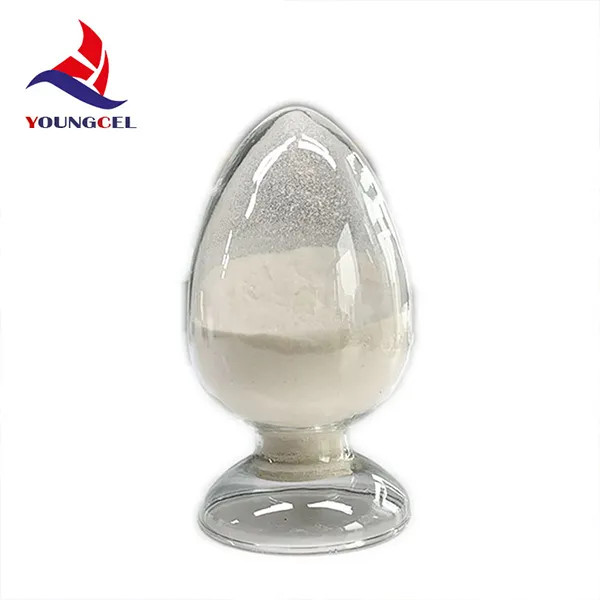The Importance and Versatility of Cellulose Raw Materials
Cellulose is one of the most abundant organic polymers on Earth, primarily derived from the cell walls of plants. This complex carbohydrate plays a crucial role in the structural integrity of plant tissues and is a biopolymer consisting of glucose units linked together by β-1,4-glycosidic bonds. Given its abundance and renewability, cellulose has emerged as a vital raw material across various industries, including textiles, paper production, food, pharmaceuticals, and bioplastics.
One of the most significant aspects of cellulose is its sustainability. As an organic material sourced from renewable resources such as wood, cotton, and other plant fibers, it presents an eco-friendly alternative to petroleum-based materials. With the growing concern about environmental degradation and the sustainable development paradigm, cellulose has become an essential component in the quest for greener products. Its biodegradability, non-toxicity, and renewability make it an ideal candidate as a substitute for synthetic materials that are prevalent in many consumer goods today.
The Importance and Versatility of Cellulose Raw Materials
The paper industry is another significant consumer of cellulose. Paper and cardboard products primarily originate from wood pulp, which is rich in cellulose. This demand for cellulose-based raw materials drives forest management practices to ensure that wood resources are harvested sustainably. Advances in technology have also led to the development of alternative pulping processes, such as the use of agricultural residues and recycled paper, which further enhance the sustainability of paper production. As digital media becomes more prevalent, there is also a growing interest in finding ways to produce more environmentally friendly paper products that minimize the carbon footprint of the paper lifecycle.
cellulose raw materials

In the food industry, cellulose finds applications as a food additive, where it serves multiple purposes, including thickening agents, stabilizers, and dietary fibers. This carbohydrate helps improve the texture of various products, from sauces to baked goods, while also enhancing their nutritional profile by contributing to dietary fiber intake. Cellulose is also used in low-fat food products to provide the desired texture without compromising taste, thus catering to health-conscious consumers.
The pharmaceutical industry also recognizes the potential of cellulose as a raw material, where it is utilized in the formulation of tablets and capsules. Microcrystalline cellulose (MCC) and carboxymethyl cellulose (CMC) serve as excipients that aid in the production process, providing bulk and stability while ensuring medication efficacy. The cellulose derivatives used in pharmaceuticals are crucial for drug delivery systems, as they regulate the release of active ingredients and improve bioavailability.
Recently, the growing interest in bioplastics has redirected attention to cellulose as a primary component in sustainable material development. Researchers are exploring cellulose's potential to replace conventional plastics with biodegradable options, addressing the global plastic waste crisis. Innovations in cellulose-based bioplastics can lead to products that decompose naturally, thereby reducing environmental pollution and the need for fossil fuels.
In summary, cellulose is a remarkable raw material with diverse applications across multiple industries. Its renewability, sustainability, and versatility position it as a critical component in addressing contemporary environmental challenges. As industries continue to seek greener alternatives and sustainable practices, cellulose will play an increasingly vital role in shaping a more sustainable future. The extraction and utilization of cellulose raw materials exemplify how we can leverage natural resources to strike a balance between economic development and environmental stewardship, paving the way for innovations that support a healthier planet.
-
Rdp Powder: Key Considerations for Wholesalers in the Building Materials IndustryNewsJul.08,2025
-
Key Considerations for Wholesalers: Navigating the World of Hpmc - Based ProductsNewsJul.08,2025
-
Hpmc Detergent: Key Considerations for WholesalersNewsJul.08,2025
-
Key Considerations for Wholesalers: China Hpmc For Tile Adhesive, Coating Additives, Concrete Additives, and MoreNewsJul.08,2025
-
Crucial Considerations for Wholesalers: Navigating the World of Construction MaterialsNewsJul.08,2025
-
Key Considerations for Wholesalers Sourcing Additive For Cement, Additive For Concrete, Additive For Putty from Additive Manufacturer Shijiazhuang Gaocheng District Yongfeng Cellulose Co., Ltd.NewsJul.08,2025




